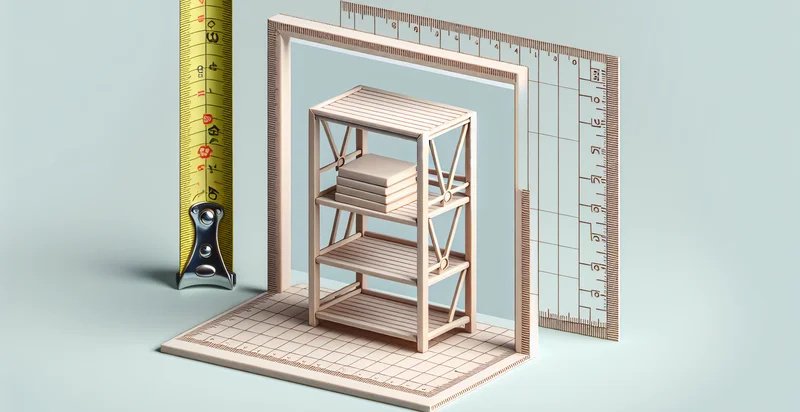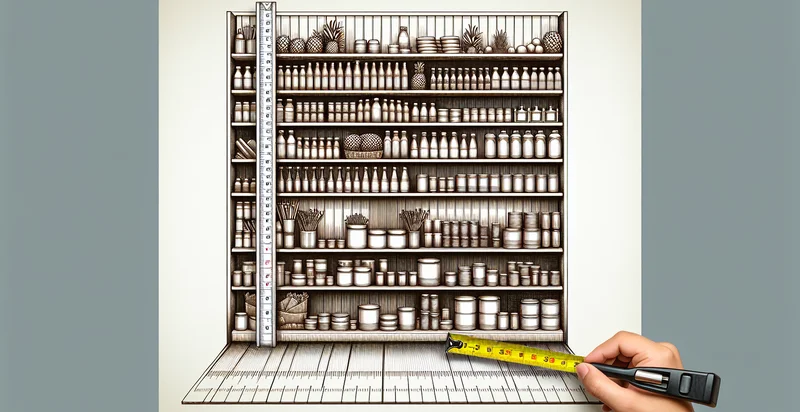Identify shelf height
using AI
Below is a free classifier to identify shelf height. Just upload your image, and our AI will predict the appropriate shelf height for various items - in just seconds.

Contact us for API access
Or, use Nyckel to build highly-accurate custom classifiers in just minutes. No PhD required.
Get started
import nyckel
credentials = nyckel.Credentials("YOUR_CLIENT_ID", "YOUR_CLIENT_SECRET")
nyckel.invoke("shelf-height", "your_image_url", credentials)
fetch('https://www.nyckel.com/v1/functions/shelf-height/invoke', {
method: 'POST',
headers: {
'Authorization': 'Bearer ' + 'YOUR_BEARER_TOKEN',
'Content-Type': 'application/json',
},
body: JSON.stringify(
{"data": "your_image_url"}
)
})
.then(response => response.json())
.then(data => console.log(data));
curl -X POST \
-H "Content-Type: application/json" \
-H "Authorization: Bearer YOUR_BEARER_TOKEN" \
-d '{"data": "your_image_url"}' \
https://www.nyckel.com/v1/functions/shelf-height/invoke
How this classifier works
To start, upload your image. Our AI tool will then predict the appropriate shelf height for various items.
This pretrained image model uses a Nyckel-created dataset and has 5 labels, including High, Low, Medium, Very High and Very Low.
We'll also show a confidence score (the higher the number, the more confident the AI model is around the appropriate shelf height for various items).
Whether you're just curious or building shelf height detection into your application, we hope our classifier proves helpful.
Related Classifiers
Need to identify shelf height at scale?
Get API or Zapier access to this classifier for free. It's perfect for:
- Inventory Optimization: This function can help retailers identify the optimal shelf height for different products based on sales data. By analyzing how product placement affects visibility and accessibility, retailers can maximize sales by ensuring high-demand items are positioned at eye level.
- Compliance Monitoring: In environments where regulations dictate shelf heights for safety or accessibility, the False image classification function can be used to monitor compliance. Retailers can regularly assess their shelf configurations to avoid fines and improve customer satisfaction.
- Enhanced Customer Experience: By understanding which shelf heights yield the highest customer engagement, businesses can tailor their displays accordingly. This approach can lead to a more pleasant shopping experience, ultimately increasing customer loyalty and repeat visits.
- Marketing Strategy Development: Marketers can leverage insights from shelf height analysis to create targeted campaigns. For instance, if a product frequently performs well at a specific height, promotional strategies can highlight that item’s availability where it sells best.
- Space Utilization Analysis: The function can assist businesses in evaluating how effectively their store layout utilizes vertical space. This analysis can lead to adjustments in shelf arrangements, helping to maximize the number of products displayed while maintaining an organized environment.
- Seasonal Display Adjustments: Retailers can utilize the identifier to adapt seasonal products to appropriate shelf heights. By analyzing sales trends during specific seasons, businesses can ensure that seasonal items are strategically placed for maximum visibility and sales potential.
- Competitive Benchmarking: By analyzing competitors’ shelf height strategies through the classification function, businesses can gain insights into industry standards and consumer preferences. This information can help inform their own shelf placement decisions, ultimately fostering competitive advantage.


